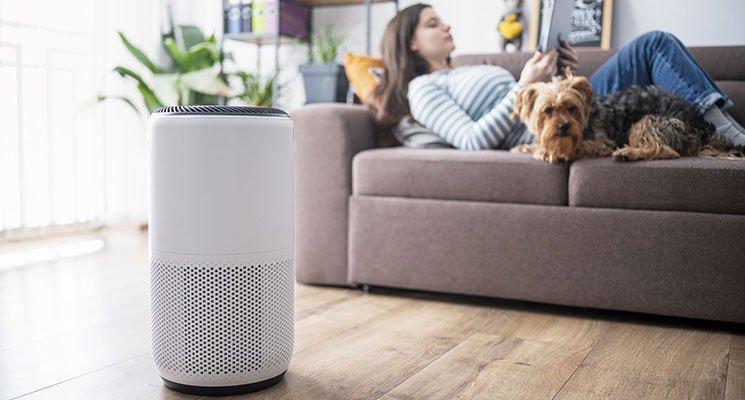The harmful particles and odors that are associated with tobacco smoke can be removed from the air by using a variety of technologies, which are employed by air purifiers designed specifically for cigarette smoke. Because cigarette smoke contains a combination of particulate matter, chemical compounds, and odorous compounds, it is difficult to effectively clean the air in areas where smoking is prevalent. Here ‘s how they work:
Do Air Purifiers Help with Smoke?
Filtration by Mechanical Means
The vast majority of smoke air purifiers make use of mechanical filters, such as High Efficiency Particulate Air (HEPA) filters, to trap solid particles such as smoke, dust, and pollen. HEPA filters have the ability to capture particles as small as 0.3 microns, learn more about, which allows them to effectively capture smoke particles as well as the larger tar particles that are associated with cigarette smoke.
Filters Made of Activated Carbon
Filters made of activated carbon or charcoal are frequently used in air purifiers. These filters are effective at removing odors as well as volatile organic compounds (VOCs), which are found in cigarette smoke. These filters have a porous structure that allows them to absorb and adsorb molecules of chemicals and odors. The lingering smell of smoke is lessened as a result of this action.
Electrostatic precipitators as well as ionizers
Ionization and electrostatic precipitation are two technologies that can be used in some air purifiers. These technologies charge particles in the air, which causes them to stick to plates or collectors inside the purifier. This technique is useful for capturing cigarette smoke and other pollutants that are suspended in the air.
Ozone Generators (Not Recommended)
In order to eliminate odors and particles, some older models of air purifiers may make use of ozone generators. Ozone generators, on the other hand, have the potential to emit ozone gas that is hazardous to human health and should not be used inside of buildings because of this risk.
Light Comprised of UV-C
In order to eradicate airborne mold spores, viruses, and bacteria, certain types of air purifiers employ a technology called ultraviolet-C (UV-C) light. Even though this does not directly remove smoke particles, it can help improve the overall air quality by reducing the amount of microbial contaminants.
A priori filters
Pre-filters are included in many different models of air purifiers, and their purpose is to remove larger particles from the air while also extending the life of the primary filter (such as a HEPA filter). Large smoke particles can be captured by pre-filters, which then assist the primary filter in maintaining its effectiveness.
Air Circulation and Ventilation
A fan on an air purifier draws in ambient air, draws it through the device’s various filters, and then expels the purified air back into the surrounding space. In order to effectively remove smoke and other pollutants, it is necessary to have adequate air circulation as well as a fan that has a sufficient amount of power.
When shopping for an air purifier to remove cigarette smoke, click here, it is important to take into account the size of the room, the Clean Air Delivery Rate (CADR) of the purifier, and the particular filtration technologies that it uses. It is essential to choose a model that is capable of managing the volume of air in your area and that has the appropriate filters to effectively address both smoke particles and odors. In addition, maintaining the purifier’s efficiency in removing cigarette smoke requires regularly replacing or cleaning the filters. This is an essential part of the maintenance process.
It is essential to keep in mind that although air purifiers can help to improve air quality by reducing the presence of smoke particles and odors, they are not a suitable replacement for giving up smoking or smoking in areas that have been designated as outdoor smoking areas. Quitting smoking entirely and not smoking in enclosed spaces are the best ways to protect yourself and those around you from the negative effects of secondhand smoke from cigarettes.


